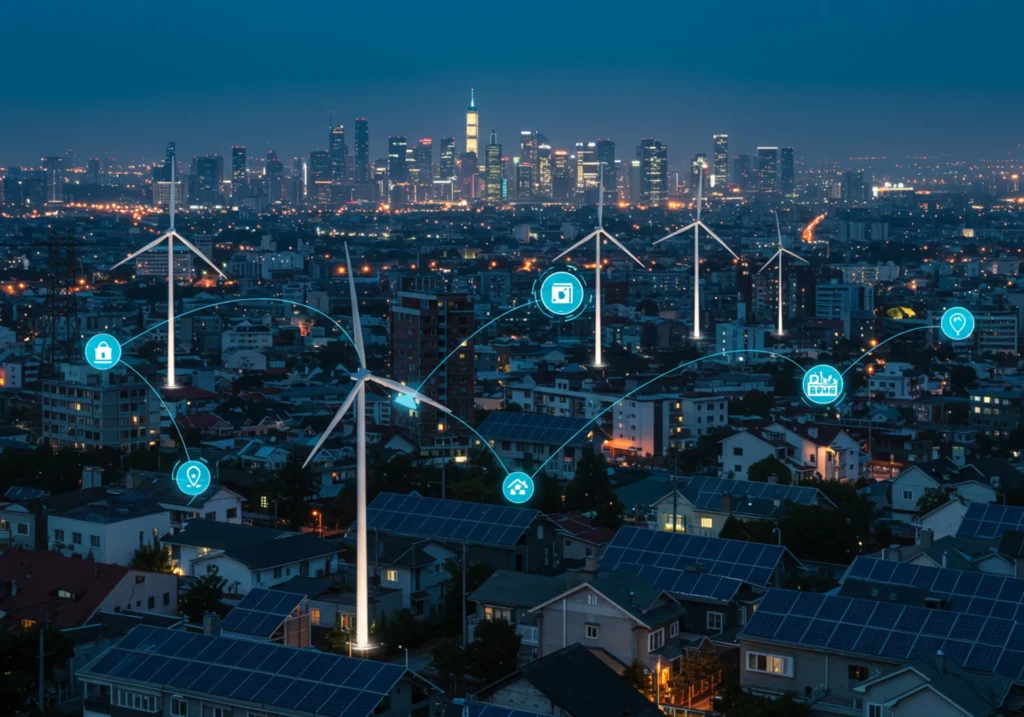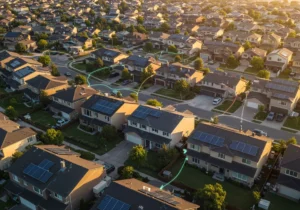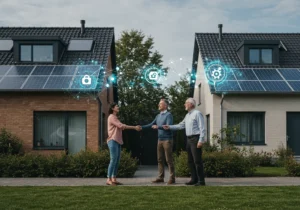What Is a Smart Grid?
A smart grid is an advanced electricity network that uses digital communication, sensors, and automation to manage energy more efficiently. Unlike conventional grids, smart grids are interactive, allowing two-way communication between energy producers, consumers, and even small-scale generators known as prosumers. This creates a flexible system capable of integrating renewable sources, improving efficiency, and enhancing resilience against disruptions.
From Centralized Power to Decentralized Networks
Traditional grids were designed for centralized generation — large power plants supplying electricity to passive consumers. In contrast, modern smart grids are decentralized. Solar panels, wind turbines, and storage systems installed in homes, businesses, and communities can now feed electricity back into the grid. This marks the rise of the “prosumer economy,” where consumers are also producers of energy.
The Role of Prosumers in Energy Transformation
Prosumers are individuals, households, or organizations that generate their own electricity — typically through solar panels, wind turbines, or microgrids — and often store it with battery systems. Instead of simply consuming energy, prosumers actively contribute to supply and may sell surplus energy back to the grid.
Benefits of Prosumers
- Energy democratization: Shifting control away from large utilities and empowering communities.
- Grid stability: Distributed generation reduces strain on centralized systems during peak demand.
- Environmental gains: Most prosumer systems are renewable, cutting carbon emissions.
- Cost savings: Households and businesses lower energy bills and sometimes earn income from surplus sales.
Countries like Germany and Australia are leading examples of prosumer-driven energy markets. Their policies encourage citizens to become active participants in clean energy, a model that is inspiring global replication.
AI in Smart Grid Evolution
Artificial intelligence is revolutionizing the way energy systems are operated. Through predictive analytics, machine learning, and real-time data processing, AI optimizes energy flows and prevents disruptions.
Key Applications of AI
- Demand forecasting: AI predicts when and where electricity demand will spike, enabling better resource allocation.
- Fault detection: Algorithms can spot grid anomalies and trigger automated responses before blackouts occur.
- Energy efficiency: AI-powered devices and smart meters adjust energy usage dynamically, saving costs and emissions.
- Integration of renewables: AI balances intermittent sources like solar and wind, ensuring a steady supply.
Blockchain: Trust and Transparency in Energy Trading
Blockchain technology is best known for cryptocurrencies, but its potential in the energy sector is equally revolutionary. By enabling transparent, secure, and decentralized transactions, blockchain supports peer-to-peer (P2P) energy trading within smart grids.
How Blockchain Works in Energy
When prosumers generate surplus electricity, they can sell it directly to neighbors or local businesses via blockchain-enabled platforms. Smart contracts automate the process, ensuring fair pricing and traceability without relying solely on central utilities.
Advantages of Blockchain in Energy
- Eliminates middlemen, reducing costs for both producers and consumers.
- Improves trust and transparency in transactions.
- Enables micro-payments and localized energy markets.
- Supports renewable integration by valuing clean energy credits.
Projects like Brooklyn Microgrid in New York and Power Ledger in Australia show how blockchain can decentralize energy markets while empowering communities.
Challenges in Smart Grid Evolution
Despite its promise, smart grid evolution faces several challenges:
- Cybersecurity risks: As grids become digital, they are vulnerable to hacking and cyberattacks.
- Regulatory hurdles: Outdated policies often lag behind technological innovation.
- High costs: Deploying smart meters, storage, and blockchain infrastructure requires significant investment.
- Equity concerns: Without proper policies, low-income communities may struggle to access smart grid benefits.
Policy and International Cooperation
Smart grid development cannot succeed in isolation. Policymakers must create frameworks that incentivize clean energy adoption, protect consumers, and encourage innovation. For example, the European Union’s Clean Energy Package promotes prosumer rights and energy market flexibility. International collaboration on energy diplomacy ensures that best practices are shared across borders.
The Future: Smart Grids Beyond 2025
The next decade will see exponential growth in smart grid capabilities. As AI becomes more advanced and blockchain adoption expands, prosumers will play an even larger role in shaping energy markets. Emerging technologies like quantum computing, edge devices, and the Internet of Things (IoT) will further enhance real-time grid optimization.
In the future, entire neighborhoods may function as self-sustaining microgrids, trading energy seamlessly through blockchain while AI optimizes usage at every level. This vision of democratized, decentralized energy is not just a possibility — it is already taking shape.
Conclusion
Smart grid evolution is redefining how we think about electricity. Prosumers are challenging traditional utility models, AI is optimizing operations, and blockchain is creating new trading systems. While challenges remain, the path forward is clear: smarter, cleaner, and more resilient energy systems. For policymakers, innovators, and communities, the smart grid revolution is not only about technology—it is about building a sustainable and inclusive energy future.




